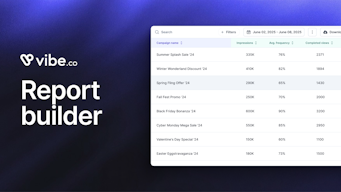The Future of Targeting and Privacy Compliance
The American version of Europe’s GDPR policies is heading for digital devices near you, and your team needs to prepare now. Of course most US digital advertisers are already all too familiar with the inevitable digital signal loss brought on by Apple’s ATT(App Tracking Transparency) policy implementation, but Google’s constant delay of their 3rd party cookie deprecation deadline may have lulled some of us into a false sense of security. Consider this your wake up call.
New Privacy Regulations are Hitting the US
As of this year, GDPR-style regulations are hitting states across the country, and showing no signs of slowing down. In a nutshell, GDPR (General Data Protection Regulation) policies, implemented across Europe in 2018, guarantee digital users agency and sovereignty over their digital lives in the following ways:
- Access — individuals have the right to request access to inspect their personal information.
- Correction — individuals have the right to request that errors in their personal information be corrected.
- Portability — individuals have the right to request that their personal information be transferred to another entity.
- Erasure — individuals have the right to request that their personal information be deleted.
- Consent — individuals have the right to decide whether their personal information may be sold or whether it may be used for purposes of receiving targeted advertising.
- Appeal — individuals have the right to appeal a business's denial of their request.
- Privacy or data protection by design — the data management system should be designed with privacy protection in mind (including data mapping, so you know what data are stored where, and the protections are appropriate to the level of sensitivity of the data).
- Record-keeping — adequate records should be maintained regarding the collection, processing, and use of data.
- Data minimization — personal information, especially that which is sensitive, should be kept, if at all, only long enough to serve its purposes. If the data aren't stored, then they can't be stolen by hackers in a breach.
- Transparency, informed consent, and legitimate uses — personal information should be used with informed consent from the data subjects, in a way that is understandable to them, and only for legitimate uses allowed under law.
- Data protection officers and data impact protection assessments — trained personnel should be monitoring compliance with privacy protection requirements, and data protection should be assessed using appropriate risk-management principles.
- Best cybersecurity practices — data should be protected using best practices for cybersecurity to minimize the risks of data breaches, including appropriate physical as well as technological defenses.
- Data breach notifications — in the event of data breaches, a tested incident response plan should be in place to ensure that appropriate notifications can be delivered in a timely manner under the different deadlines applicable under law.
- Employee training — employees should be trained in privacy protection practices pursuant to well-designed policies, and employee access to sensitive personal information should be limited to mitigate risks.
- Requiring appropriate contractual language — contract provisions regarding data and privacy protection should be used to ensure that vendors and contractors are also guarding against misuses and breaches of personal information.
The Future of Digital Targeting
Oof! That’s a lot, and it’s headed for California, Colorado, Connecticut, Utah, and Virginia digital stakeholders as we speak. Thankfully, there is a simple way to continue reaching audiences in a meaningful way: household IP tracking, best used in the context of streaming TV advertising.
Here’s how it could work for you: you’ve probably already noticed your social media advertising CPMs creeping up due to Apple-related signal loss, so you decide to explore alternate digital channels, like CTV advertising. You would then just need to log onto a simple ad platform like Vibe.co, enter your budget and campaign duration, and get to targeting. Vibe has household IP information that allows our clients to target across many dimensions:
- Demographic (age, gender, race, income, political affiliation)
- Geographic (state, city, ZIP, DMA)
- Contextual (channel inventory, time slots)
- Interest (home improvement, sports, finance, etc.)
- Retargeting (your web visitors)
Once your targeting parameters are set, upload your 15 or 30 second video, and launch! Household IP targeting is fully privacy-compliant, while allowing advertisers to maintain ad relevance and impact. You can even follow your campaign performance further by installing a Vibe.co pixel to track conversions and integrating with Google Analytics for omnichannel reporting.


